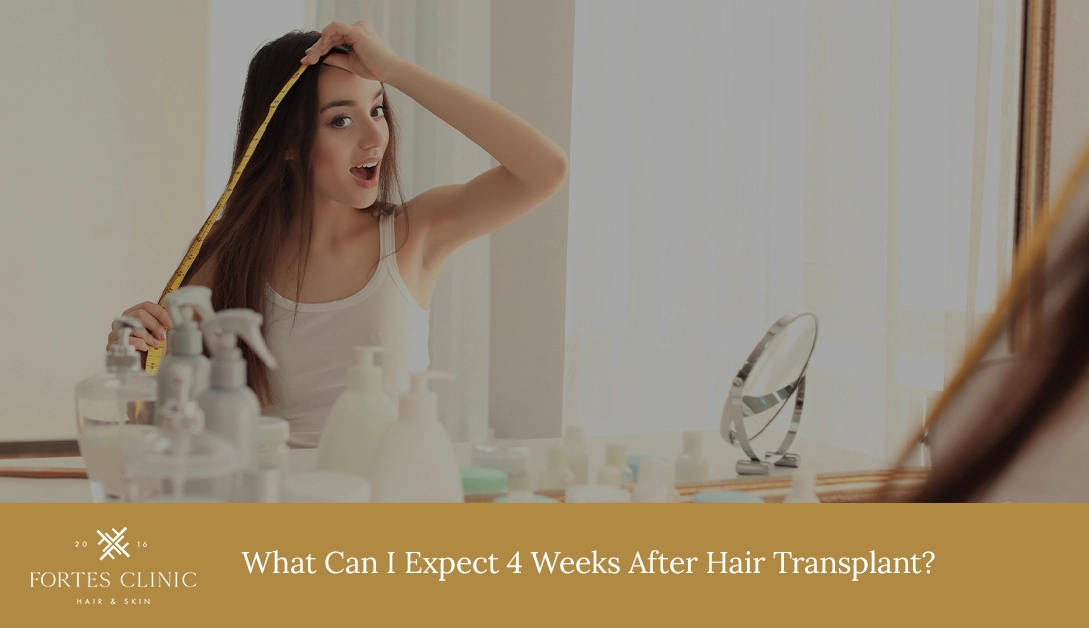Introduction
Hair transplantation has become a popular solution for those seeking to restore hair lost due to various conditions. While the procedure itself is crucial, understanding what to expect during the recovery period is equally important. In this article, we will delve into what you can expect 4 weeks after a hair transplant, helping you navigate this crucial stage of your journey towards a fuller head of hair.
The 4-Week Mark
The 4-week mark is a significant milestone in the hair transplant recovery timeline. At this stage, your scalp is still healing, and the initial post-operative symptoms are gradually subsiding. Knowing what to expect can alleviate concerns and help you maintain realistic expectations.
Physical Changes and Healing Process
Scalp Condition
Four weeks after your hair transplant, it’s normal to still experience some redness and swelling on your scalp. This is a part of the healing process as your body works to repair the affected area. The redness may persist but should gradually fade over the coming weeks.
By the fourth week, scabs and crusts from the transplant sites should mostly have fallen off. However, some may still be present. It’s essential not to pick at them as this can damage the delicate new grafts.
Hair Growth Cycle
Around this time, many patients notice hair shedding. This can be alarming but is a normal part of the hair growth cycle known as “shock loss.” The transplanted hairs enter a resting phase before new growth begins.
While shedding is common, you may also start to see the initial signs of new hair growth. These new hairs may be thin and fine initially, gradually becoming thicker and stronger over time.
Pain and Discomfort
Some residual discomfort or sensitivity in the transplanted area is normal at this stage. You might still feel mild itching or tightness as your scalp continues to heal.
If you experience severe pain, significant swelling, or any signs of infection (such as pus or excessive redness), contact your surgeon immediately. These symptoms may indicate complications requiring prompt attention.
Daily Care and Maintenance
Cleansing and Washing
Use gentle, non-medicated shampoos and conditioners recommended by your surgeon. Avoid products with harsh chemicals that can irritate your healing scalp.
Wash your hair gently, using lukewarm water. Avoid scrubbing or applying too much pressure. Instead, gently pat your scalp to clean it and ensure thorough rinsing.
Moisturising and Hydration
Keeping your scalp moisturised can aid in the healing process. Use a light, non-greasy moisturiser recommended by your doctor to avoid clogging hair follicles.
Hydration Tips
Drink plenty of water to keep your body and scalp hydrated. Proper hydration supports overall healing and promotes healthy hair growth.
Protecting the Scalp
Limit your scalp’s exposure to direct sunlight. If you need to go outside, wear a hat or use sunscreen to protect the sensitive area from UV rays.
Avoid strenuous activities that can cause sweating or put pressure on your scalp. Light exercise is usually fine, but always follow your surgeon’s advice regarding activity levels.
Diet and Lifestyle
Nutritional Needs
A balanced diet rich in vitamins and minerals supports hair growth and overall health. Focus on foods high in vitamins A, C, D, and E, as well as zinc and iron.
Incorporate lean proteins, fruits, vegetables, and whole grains into your diet. Omega-3 fatty acids, found in fish and flaxseed, can also promote healthy hair.
Lifestyle Adjustments
Smoking and excessive alcohol consumption can impede the healing process. Both can reduce blood flow to the scalp and negatively affect hair growth.
Stress can affect hair growth, so finding ways to manage stress is crucial. Consider mindfulness practices, regular exercise, and ensuring adequate sleep.
Monitoring Progress
Documenting Changes
Take weekly photos of your scalp to track progress. This can help you and your surgeon see the subtle changes and improvements over time.
Keeping a journal of your experiences, including any discomfort or noticeable changes, can be helpful. This record can assist your surgeon in providing tailored advice.
Regular Check-Ups
Follow your surgeon’s schedule for check-ups. These visits are crucial for assessing your progress and addressing any concerns.
Prepare questions ahead of your appointments. Inquire about any symptoms you’re experiencing, and seek advice on optimising your recovery process.
Common Concerns and FAQs
Expected Results and Timeline
Understanding that results take time is vital. Hair growth can vary, with significant changes often appearing several months post-surgery.
Generally, new hair begins to grow around 3 to 4 months after the transplant, with noticeable growth occurring at 6 months and full results visible at 12 to 18 months.
Possible Complications
To prevent infections, follow your surgeon’s care instructions meticulously. Keep the area clean and avoid touching your scalp unnecessarily.
Watch for signs of complications such as excessive swelling, redness, or pus. Contact your doctor immediately if these occur.
When to Contact Your Surgeon
Seek immediate medical attention if you experience severe pain, fever, or unusual discharge from the transplant site.
For less urgent concerns, schedule an appointment with your surgeon to discuss your symptoms and get professional advice.
Summary
The journey towards a fuller head of hair requires patience and diligent care. By understanding what to expect 4 weeks after your hair transplant, you can navigate this phase with confidence. Remember, each person’s experience is unique, and maintaining open communication with your surgeon is key to a successful outcome.
Ready to book your consultation? Don’t hesitate to reach out to our team if you have any questions!



